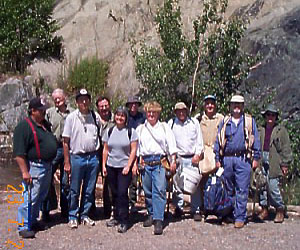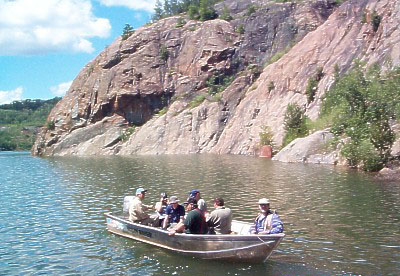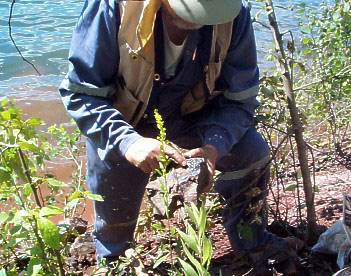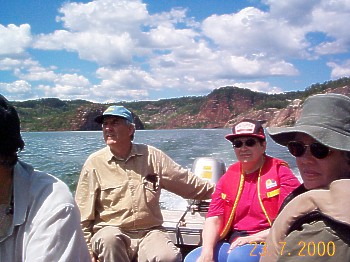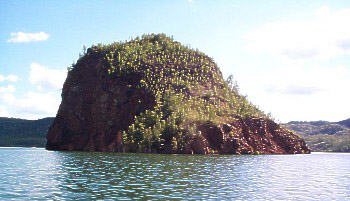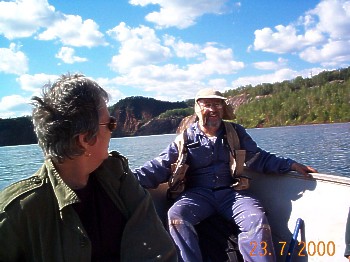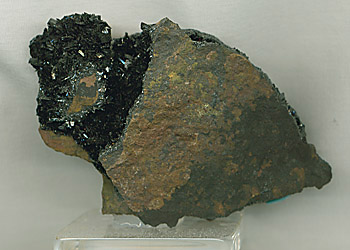 |
|||
|
|||
|
Copyright
Rockhounding at Caland Lake, a Naturalized Abandoned Mine Site near Atikokan, Ontario
Ray Bernatchez was the geologist for Steep Rock when it was operational. He is a consultant now, and a prospector, and an educator. He graciously agreed to take Kathy Harasyn and myself with the group today. Kathy has been working diligently on a website about the history of Steep Rock Iron Mines (SRIM). And me? Why am I going? I began a new job two months ago with the Atikokan Mining Attraction, and I wanted a first-hand look at the Caland pit. What better opportunity than with a group of people who, like Ray, have a passion for the wonders that can be found in the ground, with a little hard work. One of my jobs at the Mining Attraction is to raise awareness of the potential of the abandoned mine site. And rockhounding is certainly one of the primary potentials. Ray was taking us to the Caland site today and (if I survived today intact), I hoped to accompany the group to the Steep Rock site on Monday. Ray said that the rockhounding at the Caland site was good, but that Steep Rock was much better. Ray takes groups out on a special tour basis.
I packed food, frozen water bottles, heavy gloves, sunscreen, my new digital camera (a new toy to play with), an extra t-shirt, binoculars and toilet paper (just in case). Ray was providing the appropriate equipment. A house hammer is not appropriate, I quickly learned. Others in the group, more experienced, brought with them safety glasses, picks, tempered steel hammers, magnifying glasses, sledgehammers, and lots of newspaper for wrapping specimens. The group was the Brampton Rock and Mineral Club with invited guests from Toronto's Walker Mineralogical Club, and an individual from Winnipeg, Manitoba (see above photo). Court Saunders, the President of the Brampton club spent some time familiarizing me with the proper equipment. This was the second last stop on a ten-day trip that started in Sudbury, and would be winding up with an underground tour of the Williams Mine at Hemlo.
It should be added that large, well-crystallized manganite mineral specimens were collected from this locality in the past. Museum quality specimens can be seen at the Royal Ontario Museum in Toronto and at the Canadian Museum of Nature in Ottawa. The aesthetic and intrinsic beauty of the fine manganite specimens from this locality are prized by many serious collectors around the world. -- Editor
Certainly the members of the Brampton Rock and Mineral Club and the Walker club enjoyed themselves out there. And I did too.
ToursTours to the mine sites are available. To arrange a tour, please contact Ray Bernatchez, at (807) 597-4526, or e-mail him at rayberntchez@nwon.com.
This article may not be copied, distributed or reprinted in any form without the author's permission. To contact the author, please use the e-mail address provided. If you are unable to contact the author, please contact the Canadian Rockhound. Authorized reprints must acknowledge the author and the Canadian Rockhound.
|
||

Copyright © 2000 Canadian Rockhound
Back Issues |
News & Events |
Junior Rockhound |
Resources
|
|||
